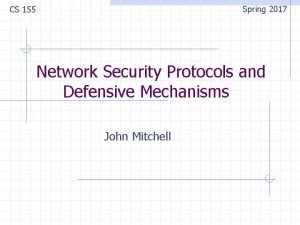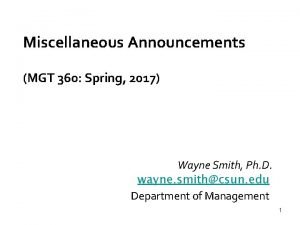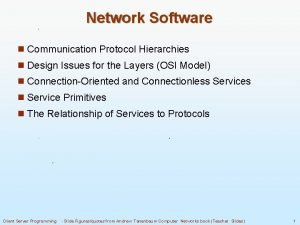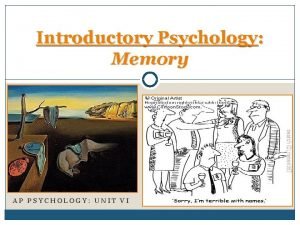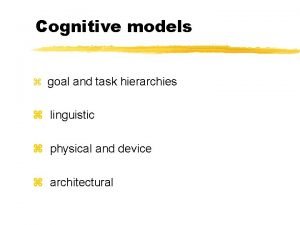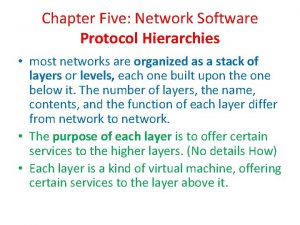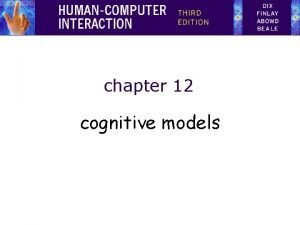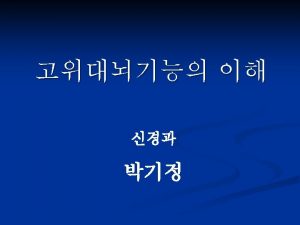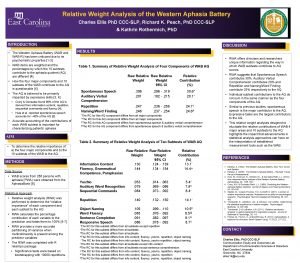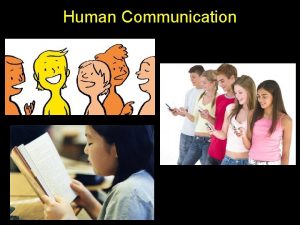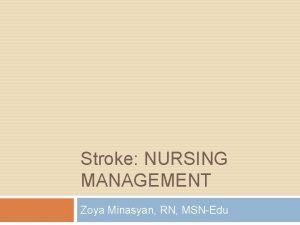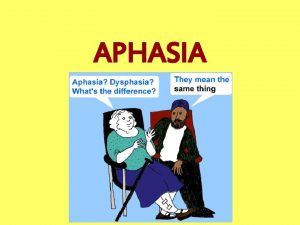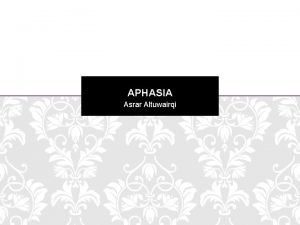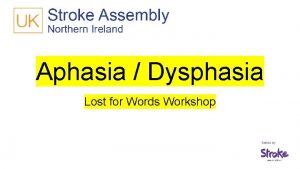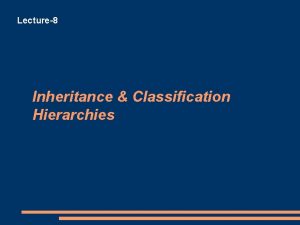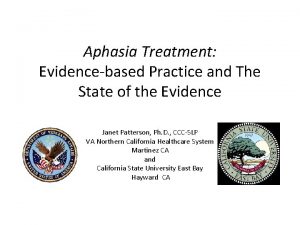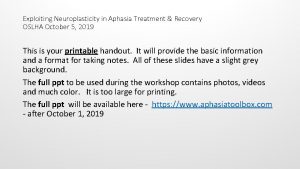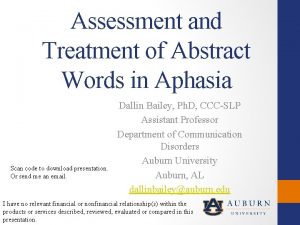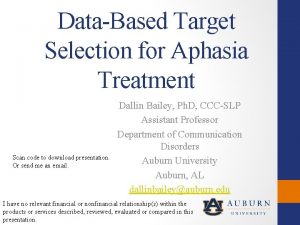aphasia treatment overviews spring 2017 cueing hierarchies for














- Slides: 14

aphasia treatment overviews spring 2017 cueing hierarchies for naming oral reading approaches response elaboration treatment (RET)

cueing hierarchies process oriented approach for naming client profile: naming difficulty significantly impacts content in everyday conversation; may be a semantic or phonological source to naming problem target: increased content units in conversational speech (impairment) rationale: appropriate cues facilitate naming of targets; repeated naming strengthens the network and improves access to the lexicon

cueing hierarchies What are cueing hierarchies? Systematic, individualized hierarchies targeting either semantic and/or phonological information Protocol: in session, present target picture • if the client is able to name the picture, move to the next target • if the client is unable to name the picture, present cues until correct response is obtained, then move to next target Important: • choose personally relevant words • divide words into sets and train sequentially • reserve a set of words for probe of untrained words

example: semantic categories target word: carrot 1. 2. 3. 4. present picture “It’s a type of vegetable. ” superordinate “It’s similar to celery. ” coordinate “Rabbits eat them. ” associated

example: combined semantic/phonological • target word: table 1. 2. 3. 4. 5. present picture it’s a piece of furniture superordinate “It sounds like fable. ” rhyming you eat dinner there associated “It starts with /t/. ” initial phoneme

measurement • in session data: o number of words named without cues (1 step of protocol) o performance at each step o use a modified SOAP note (current and last session data) and report accuracy on on each set • use information about performance that you collected to assess performance variables (e. g. , does she always get it on the last step? Does it vary? ) • outcome measures o impairment: Boston Naming Test; conversational sample; untrained word probes o activity/participation: self report of increased naming (e. g. , fewer communication repairs needed with partner; efficiency; successful phone call, etc. )

oral reading approaches process oriented client profile: may experience inability to read any whole words (letter by letter reading; pure alexia) or able to read some words, but overall difficulty with connected text o not for decoding issues target: increased reading rate and comprehension rationale: repeated oral reading strengthens access to, or representations of, words in the lexicon; faster rate results in better comprehension

oral reading What are oral reading approaches? repeated oral reading of systematically selected passages with clinician cueing Protocol: see next slides Important: • choose appropriate level of text • homework is essential

oral reading Basic MOR procedure 1. determine rate and accuracy for a passage 2. have patient re-read text, cueing to correct reading errors 3. set up homework – copied text and log ---4. review homework log 5. probe rate and accuracy of practiced passage 6. determine target rate (e. g. , 75 wpm); provide new passage when criterion is reached

ORLA protocol (Cherney, 2004)

measurement • in session data: o reading rate (wpm) and accuracy (% words accurate) o comprehension probes o qualitative data about cueing responsiveness • outcome measures o impairment: Gray Oral Reading Test; probes of untrained text o activity/participation: self report of improved/increased reading of everyday reading material (varies widely)

response elaboration training (RET) process oriented approach for oral expression client profile: variety of aphasia profiles and severities target: oral discourse increased content units and length of utterance rationale: combining behavioral techniques of modeling and forward chaining with cognitive stimulation using loose training results in expanded oral expressive output • loose training - uses the client’s response as stimulus

Protocol: uses simple line drawings RET important: used modified RET (m. RET) for clients with significant apraxia

measurement • in session data: o o content: number of information units produced (steps 1 and 6) may vary based on severity of client possibly grammatical production: number of morphemes, nouns, verbs, and modifiers • outcome measure: increased MLU in everyday conversation; measure of impact (e. g. , questionnaire, GAS)
 Ftp server spring 2017
Ftp server spring 2017 Wayne smith csun
Wayne smith csun Protocol hierarchies
Protocol hierarchies Source monitoring
Source monitoring Goal and task hierarchy model
Goal and task hierarchy model Network software protocol hierarchies
Network software protocol hierarchies Issues for goal hierarchies
Issues for goal hierarchies Preying mantra wangechi mutu
Preying mantra wangechi mutu Rich feature hierarchies for accurate object detection
Rich feature hierarchies for accurate object detection Kim ki duk summer fall winter spring
Kim ki duk summer fall winter spring Why seasons
Why seasons Unimodal vs heteromodal association cortex
Unimodal vs heteromodal association cortex Western aphasia battery
Western aphasia battery Conduction aphasia
Conduction aphasia Nursing intervention for aphasia
Nursing intervention for aphasia
